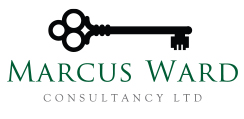Goods supplied on approval
Meaning
Goods supplied on approval is an arrangement under which items of durable nature are provided to a prospective customer for a pre-purchase trial. These items are returnable after a specified period in re-saleable condition if not accepted for purchase.
New publication
HMRC has announced via Revenue and Customs Brief 5 (2018) “RCB 5” changes to the way goods supplied on approval are treated for VAT purposes.
The broad thrust of RCB 5 is that, in HMRC’s opinion, taxpayers are using the rules for goods supplied on approval when this treatment is inappropriate.
The goods supplied on approval rules
Output tax is due at the end of the approval period. That is, tax is deferred until a time the goods are adopted (if they are). These rules are distinct from a supply of goods with a subsequent right to return them. In these cases the tax point is when title passes.
Sale on approval was considered by the Tribunal in the case of Littlewoods Organisation plc (VTD 14977). The Tribunal held that goods were supplied on approval where there is no contract of sale unless, and until, the recipient concerned adopted or was deemed to have adopted the goods. The judge in that case decided that Littlewoods did not supply goods on approval. This case appears to have triggered an HMRC initiative to look at the number of businesses which may be incorrectly deferring output tax by using these rules. It concluded that a lot fewer taxpayers were actually providing goods on approval than previously thought.
Technical
The basic tax point for a supply of goods in these situations is determined by the VAT Act 1994 section 6(2) (c) which applies in the case of goods on approval. It delays the basic tax point until the time when the goods are adopted by the customer or twelve months from the date they were originally despatched, whichever is the earlier
Section 6(2)
(2) … a supply of goods shall be treated as taking place –
(a) if the goods are to be removed, at the time of the removal;
(b) … ;
(c) if the goods (being sent or taken on approval or sale or return or similar terms) are removed before it is known whether a supply will take place, at the time it becomes certain that the supply has taken place or, if sooner, 12 months after the removal.
The guidance
HMRC has published the RCB to provide guidance on how businesses should review their transactions in order to establish whether they are using sale on approval treatment correctly.
Indicators of goods supplied on approval
Whether or not goods are supplied on approval will depend on the facts in each case and will require consideration of a number of indicators which will have to be carefully weighed against each other. Relevant indicators include the following factors but they are not exhaustive.
- The terms and conditions of trading, and all contractual terms applying.
- The time when title in the goods passes to the buyer.
- The time at which the buyer has the right to dispose of the goods as owner.
- The view presented to the customer in marketing literature, order forms, delivery notes, statements etc.
- The rights of the customer to return unwanted goods.
- The terms of any supply of credit finance provided with the goods.
- The time when payment for the goods is demanded.
- The time when payment for the goods is received.
- The time when the buyer assumes responsibility for the upkeep and insurance of the goods.
- Anything the buyer does to signify his adoption of the goods.
- The calculation of the minimum payment due for goods delivered.
- The time when a sale is recognised in the financial accounts of the business.
(these indicators are not featured in RCB 5).
Deadline
HMRC state that from 18 September 2018 all business must change their accounting systems and accurately apply the appropriate VAT treatment. However, no action will be taken for past inaccuracies and taxpayers will not be required to make any changes to records or declarations.
Delivery charges
In normal circumstances, the fee charged for delivery follows the VAT liability of the goods being supplied (it is a single supply of delivered goods). However, the RCB somewhat controversially, states that when goods are supplied on approval the delivery charge is not ancillary. HMRC conclude that as delivery occurs before the customer or the supplier know whether there will be a supply of goods, delivery is an aim in itself, represents a separate, independent supply and is not dependent upon the supply of goods. The purpose of the delivery service is to facilitate the customer inspecting the goods to decide whether or not they wish to purchase them. This is always a standard rated supply and consequently, output tax is due on this fee, whether or not the goods are adopted (and with a tax point prior to adoption or return). I expect that this analysis will be challenged at some point as it does not, in my mind, sit comfortably with previously decided case law.
Action
Businesses which consider themselves to be supplying goods on approval (usually mail order businesses) need to review their terms and manner of trading to identify whether that is indeed the case. Consideration must be given to the above indicators, the ruling in the Littlewoods case and the information in RCB 5. If what is being provided falls outside the definition of a supply on approval, the necessary changes are required in order to recognise a sale at an earlier time. Even if goods are supplied on approval, the VAT treatment of delivery charges need to be reconsidered and adjusted if need be. We can assist if required.
